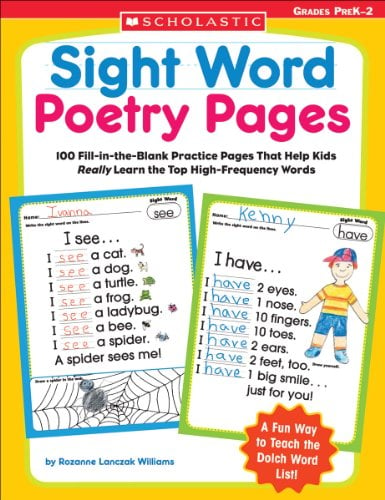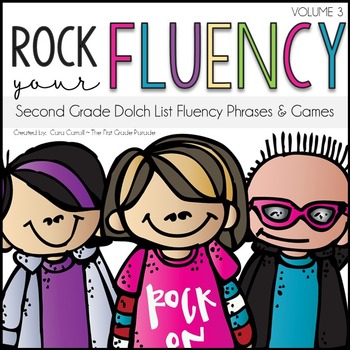Well…hello there!
Long time no blog.
My days have been crazy and I’ve been enjoying my nights with the family. When people used to tell me that kids grow up fast, I halfheartedly listened and nodded. Y’all. They weren’t kidding. I blinked and my boys grew up. They’re still not done growing…Praise God!…but wow. They’re not babies any more…at all!!! I savor every single minute I get with those two! Life’s too short to miss a beat! So you’ll have to forgive my absence, but I was lovin’ on my boys and busy making memories.
The great news is that I have A LOT to share!!! Tonight I’m focusing on fluency. Reading fluency. One of my favorite skills to watch my kids develop. Not just the rate of reading, but the expression and voice in which they read! I love watching my kids turn into little storytellers right before my eyes.
I’ve had a fluency center in my classroom for several years. Each year I seem to add a little something new to my little back of tricks. We start out the year with sight word rings….tons of poetry…and fun little games.
This is my favorite resource for poetry…

We’ve progressed into fluency phrases and short stories and my kids are obsessed. Completely and totally OBSESSED.
It was really important to me to make sure my kids were practicing full on sight word phrases…and a lot of them. I wanted them to have opportunities to be successful at reading…even independently…without my help. I also wanted the phrases to be leveled so that I could differentiate independent learning. We use the Dolch lists, so I created a Pre-Primer and Primer set of fluency phrases using the words off of those lists…plus several common nouns. The kids have to work their way through 7 Pre-Primer sets of fluency phrases before they can move on to the Primer sets. I divided both sets into different colored tubs so that the kids would know the difference between the two sets. And they know exactly where to go and on which set of phrases they should be practicing.
Each time my kids fluently read their way through a set of phrases, they get a little certificate. As Abby would say, “STOP.THE.WORLD.” They about DIE! They will do ANYTHING for a little paper piece of praise!!!
In addition to the fluency phrase rings, we also have a fluency folder. This is a little bit different than our poetry folder, but it serves a very similar purpose…to increase sight word recognition automaticity and improve voice {expression, intonation, etc.}
The poetry pages are great for fluency practice, but I don’t time the kids with them when they read. I wanted something separate for that. So…I took all the words from the Pre-Primer and Primer Dolch Lists and made up fluency stories using those words. I introduce a new story at the beginning of the week {sometimes 2-3 depending on the student} and time their first read and record errors, time, etc. This is a SUPER quick activity and takes very little time given that the text is mostly sight words. Right before our guided reading lesson, I have my kids read their fluency story to me and time them on it then record it in their fluency folder. They love seeing how quickly they can read each day and how their fluency/time improves throughout the week. This doesn’t take the place of their guided readers though. They still get a guided reader every day.
When my kids practice their fluency independently, they’re not just reading their fluency phrases. They’re reading their fluency stories, too. I keep a few rings of these voice cards in the fluency tubs so that the kids can practice reading their stories {and phrases} in different voices. They LOVE this.
My kids keep their fluency folders at school so that they have lots to choose from when they read, but they could easily be sent home for practice, too.
Here’s a little peek at what my fluency tubs look like. They all contain a set of fluency phrases {a different level in each tub}, voice cards, sand timers, stopwatches, fluency/whisper phones, a microphone {for my little rock stars} and some glassless glasses {just for kicks}.
The kids are responsible for keeping track of their fluency folders because we’re a bit limited on space. So far, so good.
We also LOVE playing games to help us improve our fluency. This is one of our favorites! Roll, Read, & Highlight!
We play a few different whole group fluency games, too…but I really want to take pictures of those before I share because if you’re anything like me, you’re a visual learner and you’ll need some pictures to go along with the explanation! Sometimes I just can’t articulate it like I can show it! HA!
Anyway…I finally gave this whole center a face lift and added it to the shop.
I also have fluency sets available
So tell me, friends. What wonderful activities do you do to help improve fluency?! Reader’s Theater?? Poetry?? DO TELL!!!! I’m always looking for more ideas!!!














These are wonderful! I'm the kindergarten Title I teacher and our kindergarten uses our reading series and Fundations sight words so there haven't been too many introduced at this point. The ones we have, the kiddos I work with are struggling to read so reading sight word phrases are difficult for them. How do you help your students who struggle to read sight words?
ReplyDeleteI teach at a Title 1 school also. We send home a sight word booklet at the beginning of the year for parents to use at home with their kids. This booklet contains 12 lists of dolch words {all 220 words divided}. We also send home a few handouts of ideas and activities that parents can do at home to reinforce sight word recognition. Parent support is tremendous, but as you know, it doesn't always pan out the way we hope :) SO...to make sure all of our kids are getting practice...I have a sight word center that has activities differentiated to each kids' abilities. I assess sight word recognition every Friday. I try to focus on 5-6 words a week for each of my kids {based on their weekly word check}. We play "BANG" a lot...wear sight word necklaces...lots of activities in their sight word center. My kids who struggle with the words practice reading sight words instead of phrases. Lots...and lots...and LOTS of hands-on reinforcement!!! Not really one specific thing, but lots of things working together!!!
DeleteThank you! I wish I could use all of my sight word activities, but I have just 15 minutes with my groups. I send home sight word games and idea sheets as well as the classroom teachers, but the kiddos I work with don't get too much at-home support, as you mentioned.
DeleteAbsolutely LOVE your fluency center!! I will be getting that :)
ReplyDeleteRight now, my lils are loving DK Coleman's One Breath Boxes. They get SO excited to see how many words they can read in one breath and how far they can get in the progression of challenging lists.
ps. SCANDAL is back on tonight!!!!!!!!!!! <3
Samantha
Tales of a #teachernerd
I was just about to add the same thing, DK Coleman's One Breath Boxes are awesome!
DeleteYou're my hero! ;)
ReplyDeleteI'm really making a push on fluency this year & love this post! I picked up your Rock On! pack yesterday - it looks amazing! This post also reminded me of the sight word poems - I have that book tucked away somewhere and need to dig it out! Thanks!
ReplyDeleteJen
Love the fluency rings! Great idea for quick practice.
ReplyDeleteI'm currently finishing up my Master's and did my research on reading fluency! I've used Readinga-z.com in conjunction with the Words Their Way spelling program and have seen huge gains in my kiddo's fluency!! At the beginning of the year I assessed their knowledge of spelling patterns and used the WTW matrix to place my kids into word work groups. Using this pre-assessment I could then select spelling lists that targeted areas they needed to work on. Each week they focused on a pattern, such as long a: cvce, ai, ay. I then found a readinga-z story that followed this pattern. My students would record themselves reading a few pages on Monday, practice, practice, practice and then rerecord themselves on Friday. I then gave each reader a rubric to score themselves on their growth. They were SO proud to hear the difference and we were even able to store these recordings in their own fluency book on an iPad (using the Book Creator app). I've continued this practice with them into 3rd grade and have seen so much growth in them as fluent, and comprehending(!!), readers!
ReplyDeleteWe do the Great Poetry Race in my room. When we learn our poem of the week, we then take it home on Friday and we read it over and over to anyone and everyone who will listen. Whoever listens, signs it on the back. Students return the poem on Mondays to keep in their poetry folder and the student with the most signatures gets to have the (really cheesy and cheap) trophy on their desk for the week. The trophy says "Great Poetry Race" on it. My cuties love to earn it and its a fun way to build fluency for them. :)
ReplyDeleteErica
Sprinkles to Kindergarten
erica_crowder0612@yahoo.com
I love the fluency pack. I have got it in my cart for my 1st grade ELL kids!
ReplyDeleteMels
Ms. K/1 ELL
I just picked up your fluency pack, and it is so great! But, there is one thing I am having trouble managing...When do you have the kids read their fluency rings to you to earn their certificates? I feel like I am so strapped for time to begin with, and I'm not sure how to fit it in! Help!
ReplyDeleteCara,
ReplyDeleteDid you buy the whisper phones for your fluency tubs, or make your own? I love your ideas! I will have to implement some into my first grade classroom :)
Jennifer Falcon
I love your fluency center. I spent my snow days cutting, laminating, and prepping your fluency TPT download so I can have the center ready for the kids this week. I was wondering how many cards you put on each ring. In the pictures, it only looks like 20ish, but in your TPT package there were 50+ for some levels. Do you break them down into smaller parts all as level 1? If so, how do you manage that with the kids? Do they work there way through multiple level 1's before they can move on to level 2?
ReplyDelete